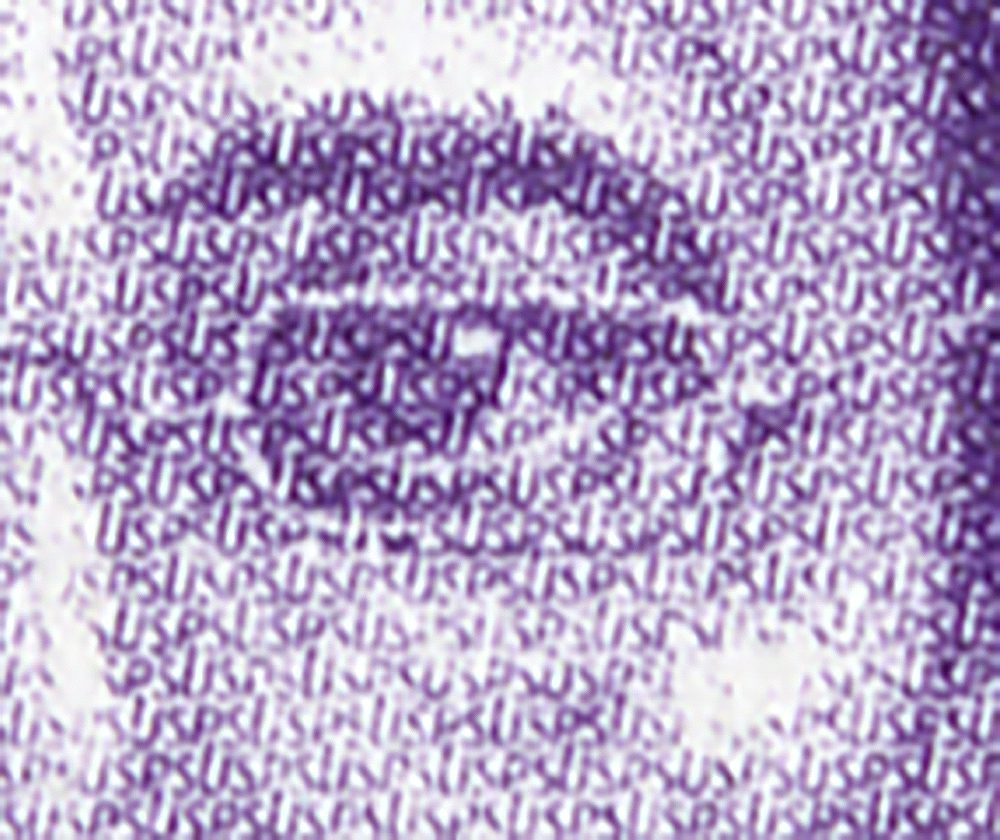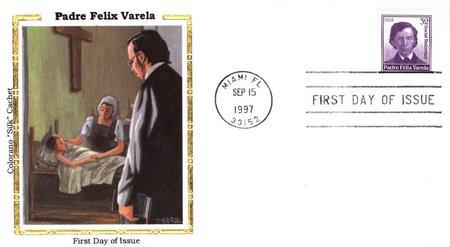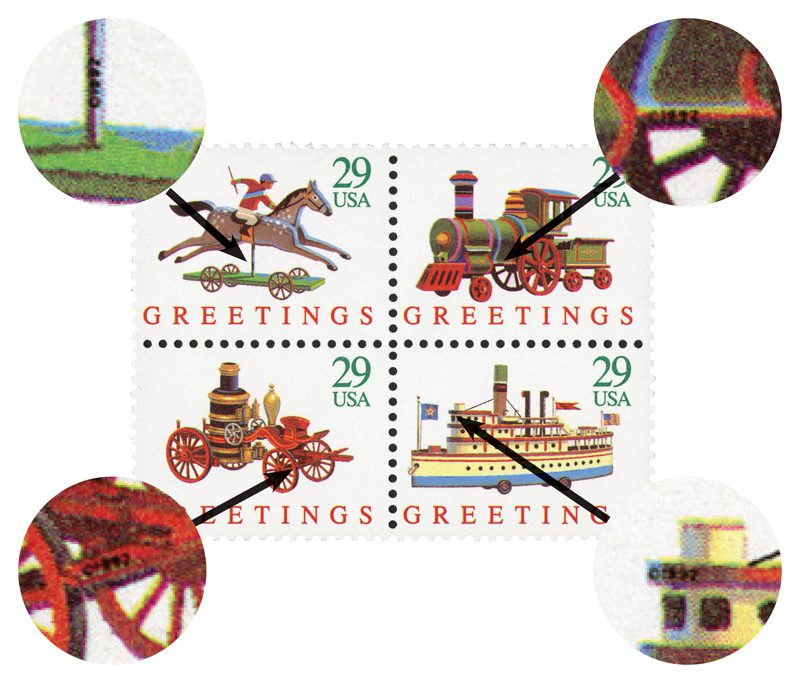On September 15, 1997, the USPS issued a stamp whose vignette consisted entirely of microprinting.
The stamp honored Felix Varela, a Cuban-born priest who emigrated to the US in 1823. He spent much of his life helping the poor and working for racial, ethnic, and religious tolerance. Varela founded churches, orphanages, nurseries, and the country’s first Spanish-language newspaper.
The Varela stamp was a late addition to the 1997 stamp program, having been promoted by Postal Service Board Chairman Tirso del Junco. Junco had been strongly lobbying for more Hispanic figures to appear on US stamps. The stamp was to be issued on September 15, 1997 as part of National Hispanic Heritage Month. According to postal officials, it was the 38th US stamp with a Hispanic theme.
When the Varela stamp was unveiled in August 1997, Junco stated, “The design is like its subject: modest, understated, powerful in its simplicity.” However, the stamp design had a hidden security feature that you’d need an eagle eye or a microscope to see.
Rather than printing the stamp with the usual pattern of dots found in offset printing, Valera’s portrait was created through microprinting of the letters “USPS.” According to a postal spokesman, this was a “user definable screen… a type of microprinting that swaps out the conventional dot pattern of visible lines with letters.” The experimental printing technique was used to discourage and protect against counterfeiting.
Microprinting is tiny type added to a stamp’s design that is so small, it can’t be read without a magnifying glass or microscope. The printing is usually made up of letters, numbers, and symbols. Microprinting is a security measure to prevent counterfeiting. The use of counterfeited stamps means lost revenue for the US Postal Service. Producing and selling fake stamps is a federal crime. When forgers try to reproduce a microprinted stamp using a scanner or photocopier, the text may appear as a solid line or blur. It’s too small to make a clear copy.
Need a microscope or magnifier? Click here for several affordable options.
| FREE printable This Day in History album pages Download a PDF of today’s article. Get a binder or other supplies to create your This Day in History album. |
Discover what else happened on This Day in History.





Very interesting article as usual. Also nice to read about Father Varela, his mission to the poor and sick and his establishment of the first Spanish language newsletter.
Mystic always comes up with new and interesting articles. Thank you Mystic.